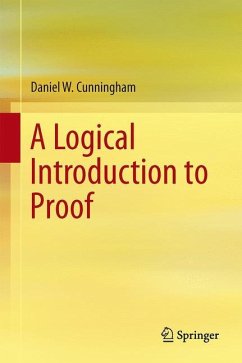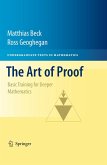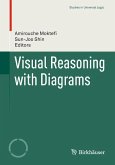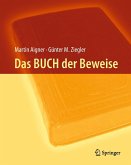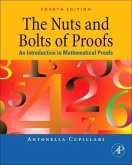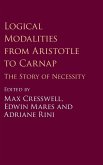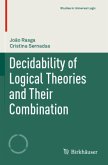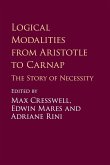A Logical Introduction to Proof is a unique textbook that uses a logic-first approach to train and guide undergraduates through a transition or bridge course between calculus and advanced mathematics courses. The author s approach prepares the student for the rigors required in future mathematics courses and is appropriate for majors in mathematics, computer science, engineering, as well as other applied mathematical sciences. It may also be beneficial as a supplement for students at the graduate level who need guidance or reference for writing proofs. Core topics covered are logic, sets, relations, functions, and induction, where logic is the instrument for analyzing the structure of mathematical assertions and is a tool for composing mathematical proofs. Exercises are given at the end of each section within a chapter.
Chapter 1 focuses on propositional logic while Chapter 2 is devoted to the logic of quantifiers. Chapter 3 methodically presents the key strategies that are used in mathematical proofs; each presented as a proof diagram. Every proof strategy is carefully illustrated by a variety of mathematical theorems concerning the natural, rational, and real numbers. Chapter 4 focuses on mathematical induction and concludes with a proof of the fundamental theorem of arithmetic. Chapters 5 through 7 introduce students to the essential concepts that appear in all branches of mathematics. Chapter 8 introduces the basic structures of abstract algebra: groups, rings, quotient groups, and quotient rings. Finally, Chapter 9 presents proof strategies that explicitly show students how to deal with the fundamental definitions that they will encounter in real analysis, followed by numerous examples of proofs that use these strategies. The appendix provides a useful summary of strategies for dealing with proofs.
Chapter 1 focuses on propositional logic while Chapter 2 is devoted to the logic of quantifiers. Chapter 3 methodically presents the key strategies that are used in mathematical proofs; each presented as a proof diagram. Every proof strategy is carefully illustrated by a variety of mathematical theorems concerning the natural, rational, and real numbers. Chapter 4 focuses on mathematical induction and concludes with a proof of the fundamental theorem of arithmetic. Chapters 5 through 7 introduce students to the essential concepts that appear in all branches of mathematics. Chapter 8 introduces the basic structures of abstract algebra: groups, rings, quotient groups, and quotient rings. Finally, Chapter 9 presents proof strategies that explicitly show students how to deal with the fundamental definitions that they will encounter in real analysis, followed by numerous examples of proofs that use these strategies. The appendix provides a useful summary of strategies for dealing with proofs.
From the reviews:
"Cunningham (Buffalo State, SUNY) focuses on the strategies for different proof techniques. ... The well-written text is consistent in its focus, which should help students. The book includes sufficient, appropriate exercises. ... contains ample notes to guide students through most of the exercises. Whether used for a course or as a reference for students learning proof techniques, this book is certainly worthy of consideration. Summing Up: Highly recommended. Lower-division undergraduates through graduate students." (J. R. Burke, Choice, Vol. 51 (1), September, 2013)
"Cunningham (Buffalo State, SUNY) focuses on the strategies for different proof techniques. ... The well-written text is consistent in its focus, which should help students. The book includes sufficient, appropriate exercises. ... contains ample notes to guide students through most of the exercises. Whether used for a course or as a reference for students learning proof techniques, this book is certainly worthy of consideration. Summing Up: Highly recommended. Lower-division undergraduates through graduate students." (J. R. Burke, Choice, Vol. 51 (1), September, 2013)

